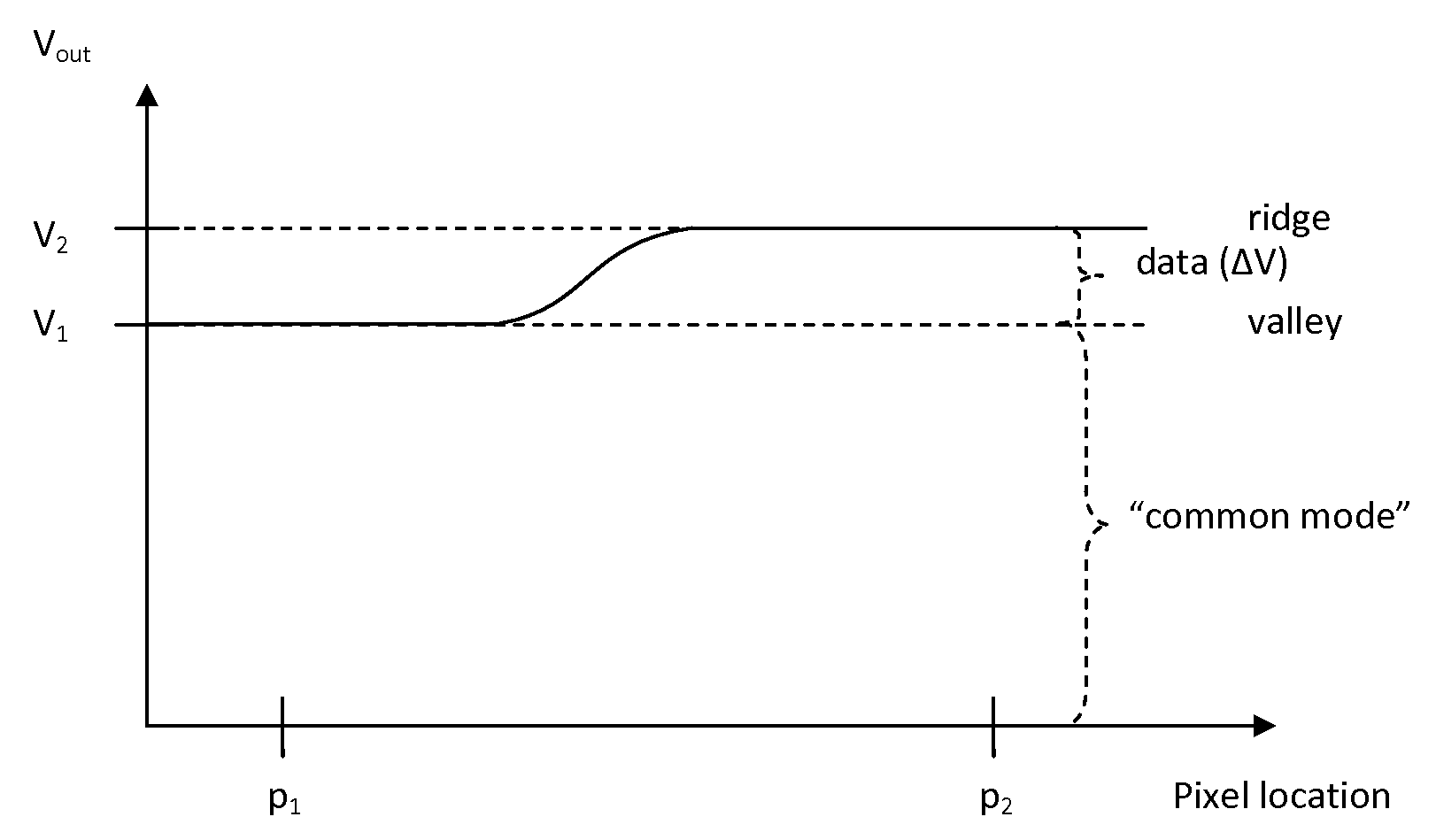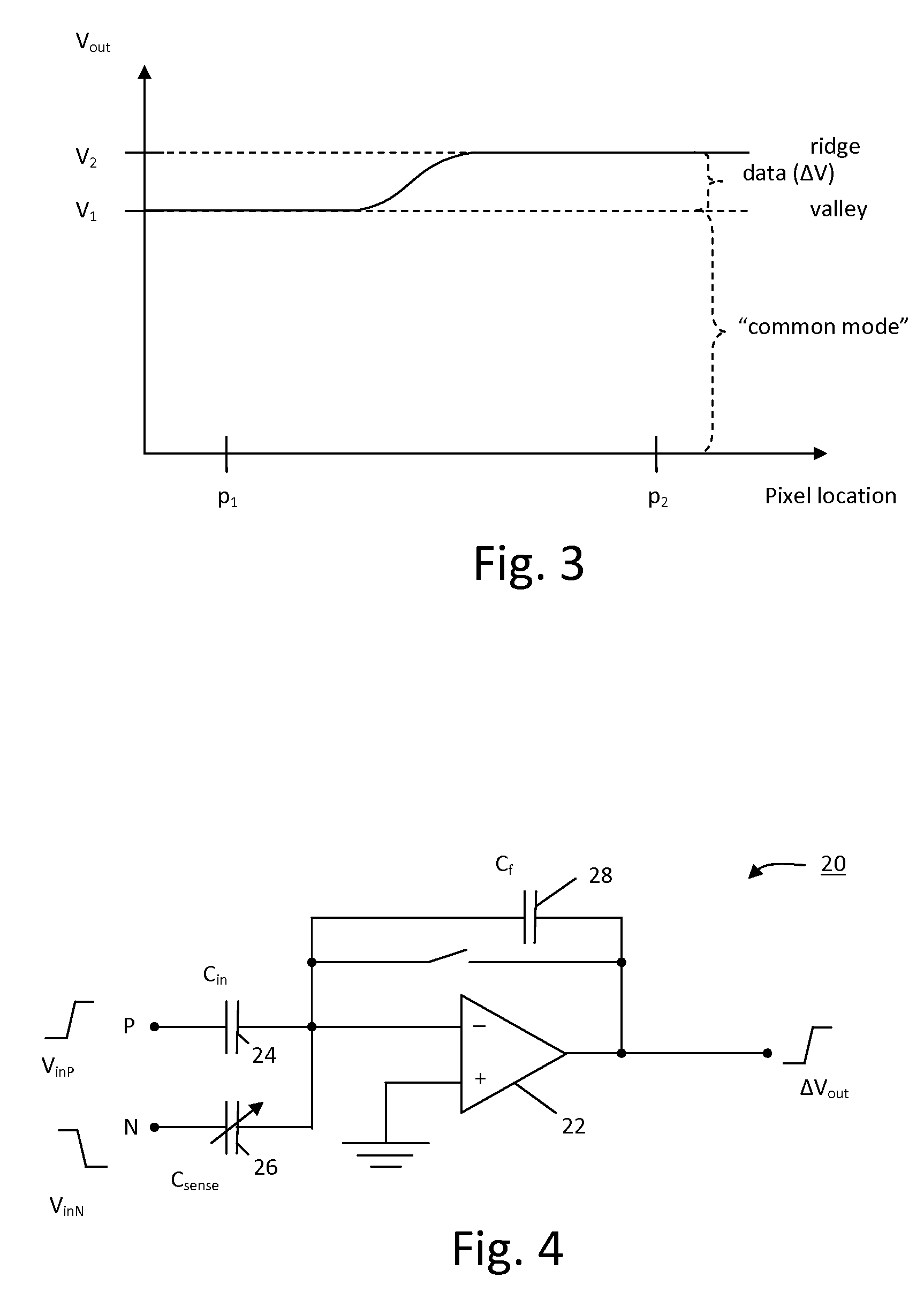Pixel Sensing Circuit with Common Mode Cancellation
a sensing circuit and common mode technology, applied in the field of biometric data, can solve the problems of affecting not only the undesired, the output dynamics of the sensing circuit are not used efficiently, and the difficulty in accurately determining data in that output, etc., to achieve the effect of improving the signal-to-noise ratio (snr) of the pixel circuit and low-power pixel circuit implementation
- Summary
- Abstract
- Description
- Claims
- Application Information
AI Technical Summary
Benefits of technology
Problems solved by technology
Method used
Image
Examples
Embodiment Construction
[0022]In order to remove the common mode, we have developed an improved pixel circuit 20, as illustrated in FIG. 4. Pixel circuit 20 comprises an operational amplifier 22 having an input connected to a first capacitor 24, a second capacitor 26 which serves as the sensing capacitor, and a third capacitor 26, which is the feedback capacitance (Cf). A charge P is applied to capacitor 24 as VinP, and a charge N is applied to capacitor 26 as VinN. The magnitudes of charges P and N may be different, but they are essentially of opposite phase with respect to one another.
[0023]Again, in terms of CS0, the sensing capacitance Csense, is given by
Csense={CS0intheabsenceofafingerprintridge(CS0=Csense)CS0(1-α)inthepresenceofafingerprintridge(thepixellocationptyp.approx.0.1)
In the absence of a fingerprint we obtain
Δvout=-ΔvinP·CinCf+ΔVinN·CS0Cf(2)
And in the presence of a fingerprint we obtain
Δvout=-ΔvinP·CinCf+ΔVinN·CS0Cf(1-α)or(3)Δvout=-ΔvinP·CinCf+ΔVinN·CS0Cf-ΔVinN·CS0αCf(4)
[0024]Now, we choose ...
PUM
 Login to View More
Login to View More Abstract
Description
Claims
Application Information
 Login to View More
Login to View More - R&D
- Intellectual Property
- Life Sciences
- Materials
- Tech Scout
- Unparalleled Data Quality
- Higher Quality Content
- 60% Fewer Hallucinations
Browse by: Latest US Patents, China's latest patents, Technical Efficacy Thesaurus, Application Domain, Technology Topic, Popular Technical Reports.
© 2025 PatSnap. All rights reserved.Legal|Privacy policy|Modern Slavery Act Transparency Statement|Sitemap|About US| Contact US: help@patsnap.com



